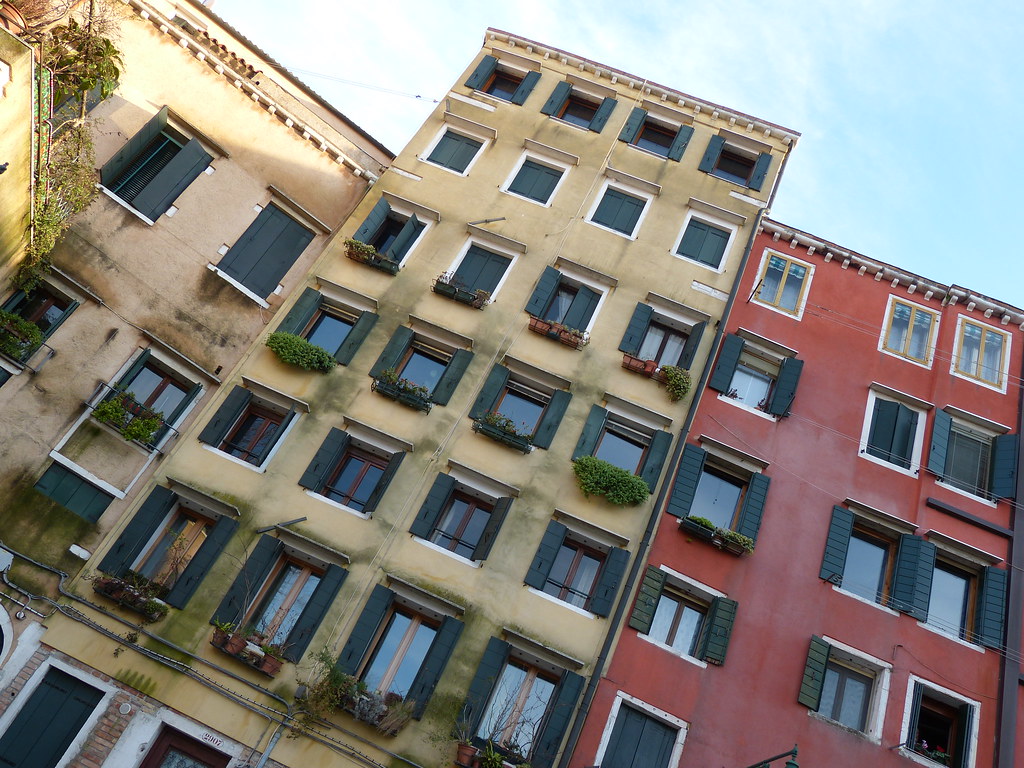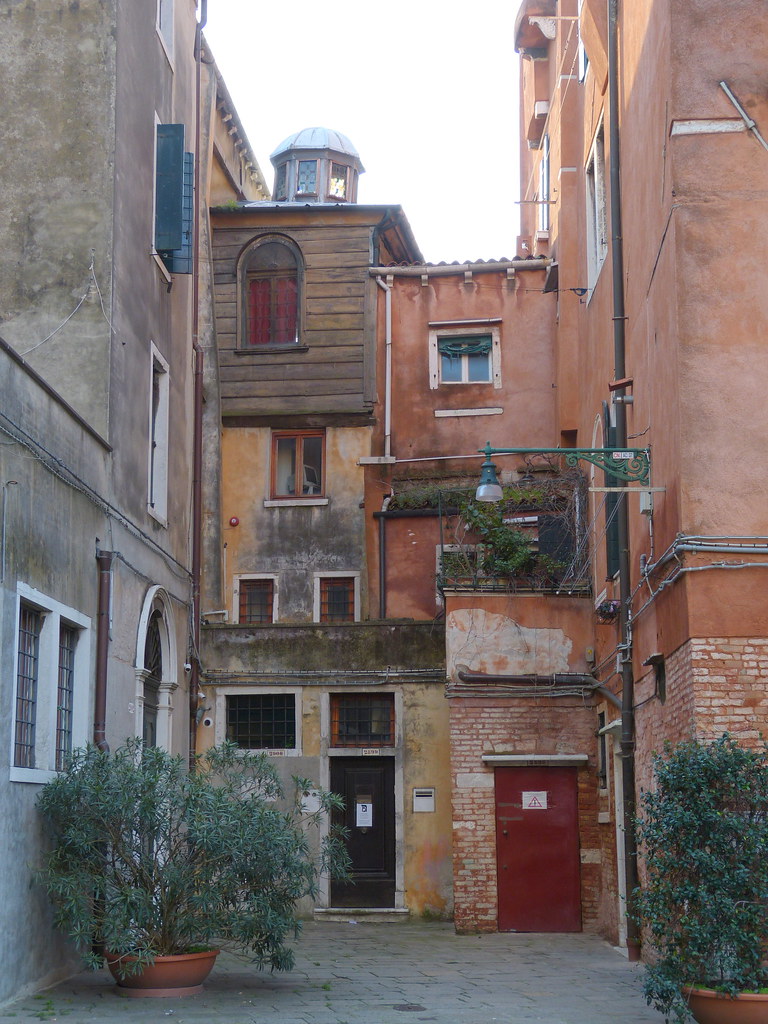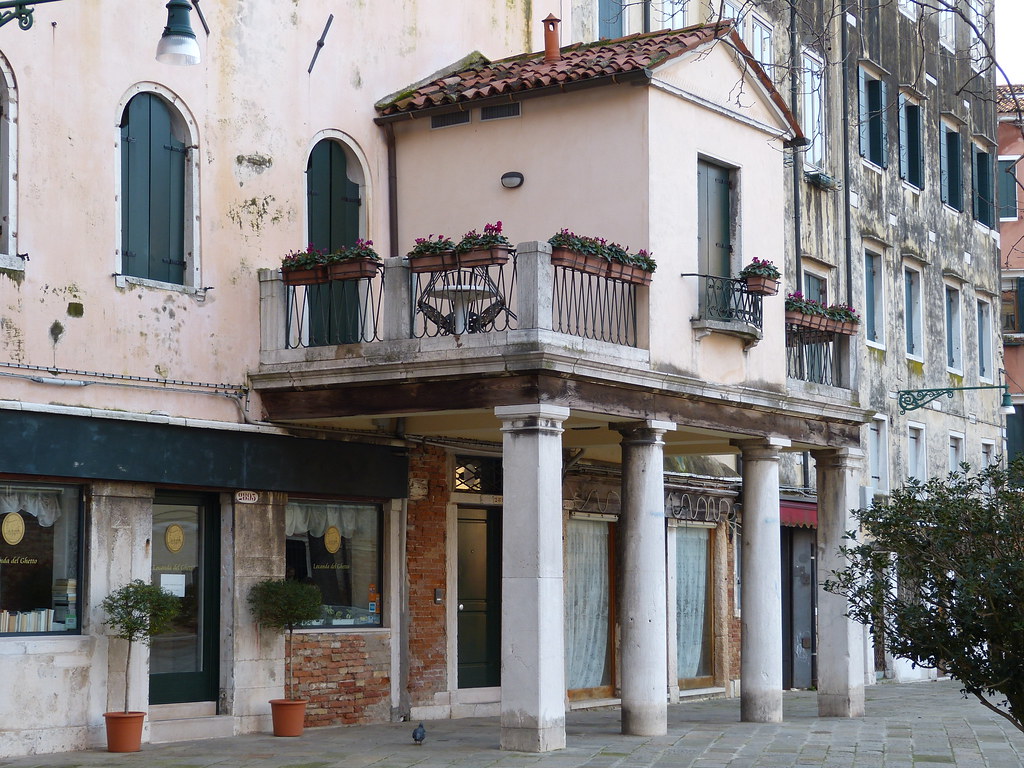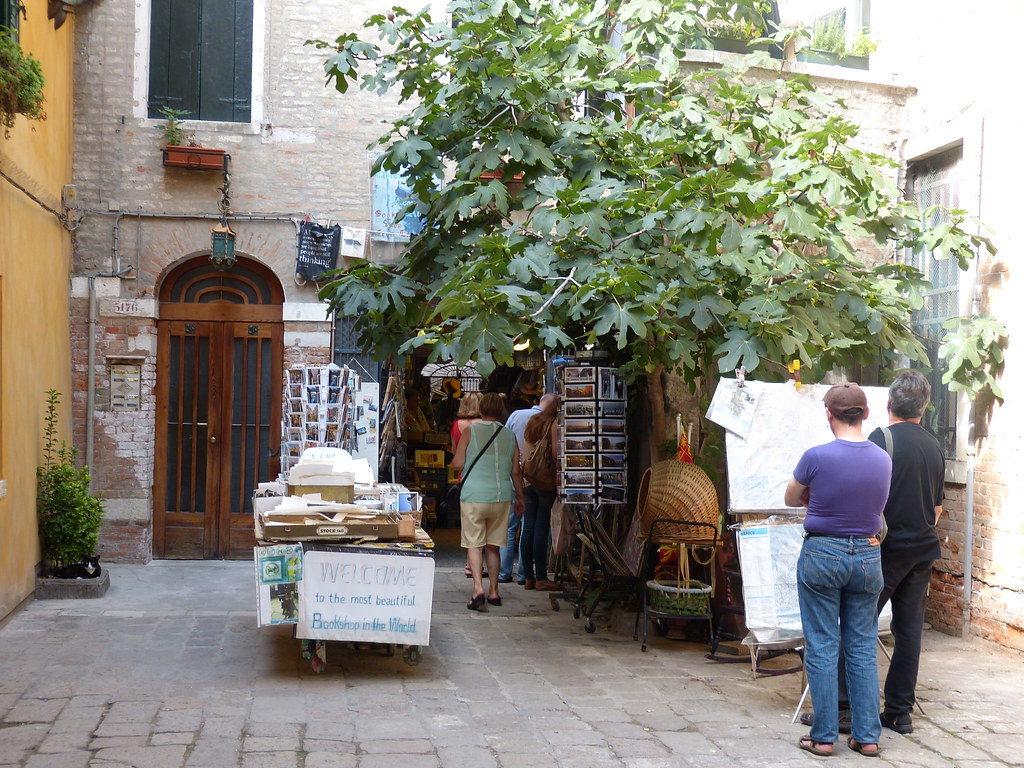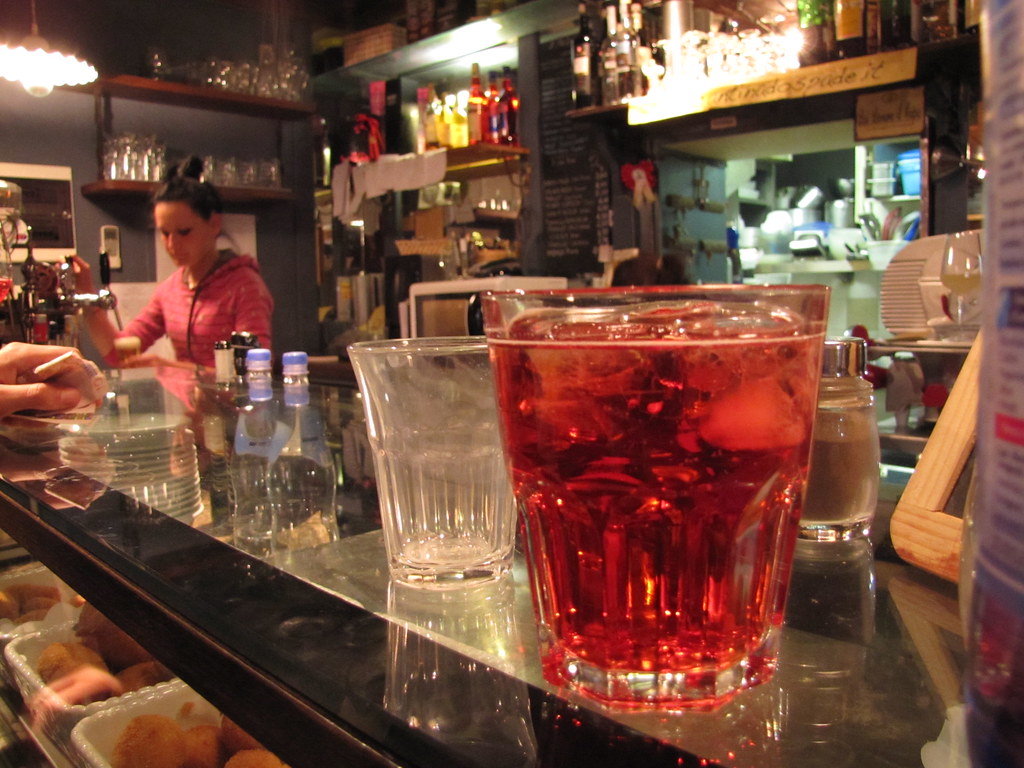Many people who have visited Venice complain that the food there is expensive and dull. It is not, if you follow a few rules:
First of all, get away from the area around Saint Mark's Square: the dinner will cost you an arm and a leg. The restaurants overlooking the canal near Rialto Bridge are also very touristic. Basically, all restaurants with touts inviting you in are to be avoided, especially near St. Mark's Square and Strada Nuova. Some of them will even serve you ready meals! Finally, don't order pizza in Venice: because of security reasons wooden ovens are prohibited in the city, so it's really difficult to find a good pizza place in Venice. Just wait for the next Italian town in your itinerary, and enjoy the fish Venice has to offer!
And now, my five favourite places to eat something in Venice, in random order:
1) Impronta Café (Dorsoduro 3815)
Located in the university area, this lounge bar serves pasta, club sandwiches, meat and fish, with a menu that changes daily. For lunch during the week the atmosphere is more informal, but for dinner and on the weekends expect a refined menu and slightly higher prices. Always affordable anyway. It is one of my favourite places in Venice! Thanks to its big windows you can watch the people go by as you eat.
2) Osteria Alla Bifora (Campo Santa Margherita, Dorsoduro 2930)
This stylish and atmospheric bar offers delicious Venetian chiceti (appetizers, similar to Spanish tapas), like tartine with baccalà mantecato (creamed salted codfish) and polpette di carne o di verdure (meatballs and veggie balls). It has also good wines, which you can sip at the wooden candle-lit tables. It is located in one of the most lively squares in Venice, Campo Santa Margherita. It is where students meet in the evening, drinking endless aperol spritz!
 |
| Osteria alla Bifora |
 |
| Nice atmosphere at Osteria alla Bifora |
3) Al Timon, Cannaregio (Fondamenta dei Ormesini, Cannaregio 2754 )
Located in one of my favourite parts of Venice, the quiet Fondamenta dei Ormesini in Cannaregio, this bar is one of the places where young locals like to hang out in the summer. There is a boat berthed in front of the bar where you can sit with your drink. If you want to eat, enjoy the wide variety of cicheti (1€ each) or order a delicious meat plate.
 |
| Just a few cicheti, Al Timon |
This place, located near Rialto Bridge, probably has the best fried calamari in town. Come here for fish, or enjoy a drink with your friends sitting outside on the bench, in true Venetian style. The polpette with spianata calabra I tried the other night are also amazing!
5) Osteria Al Portego (Castello San Lio, 6014)
You can either sit down and enjoy a proper meal at the table, or order some cicheti and a glass of wine and eat it in the courtyard outside this place, tucked behind the Malibran Theatre, the area where the house of Marco Polo is supposed to be. Try the crocchette di patate (potato croquettes) or the mozzarelline fritte (small fried mozzarellas on a stick).
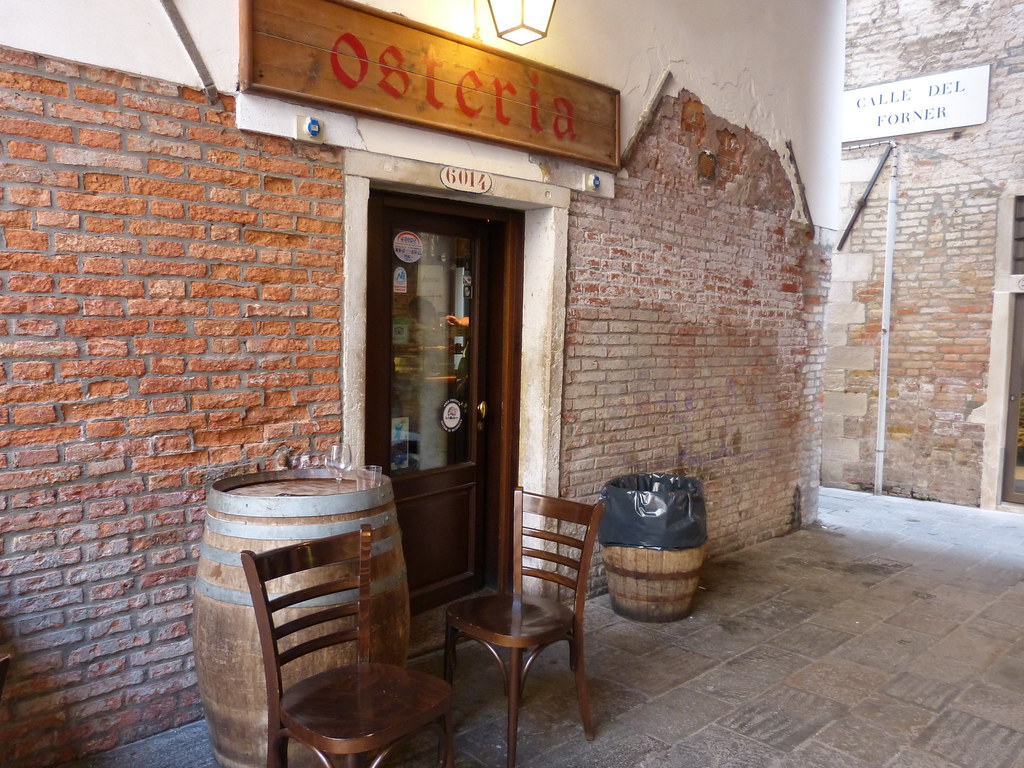 |
| Osteria al Portego |












